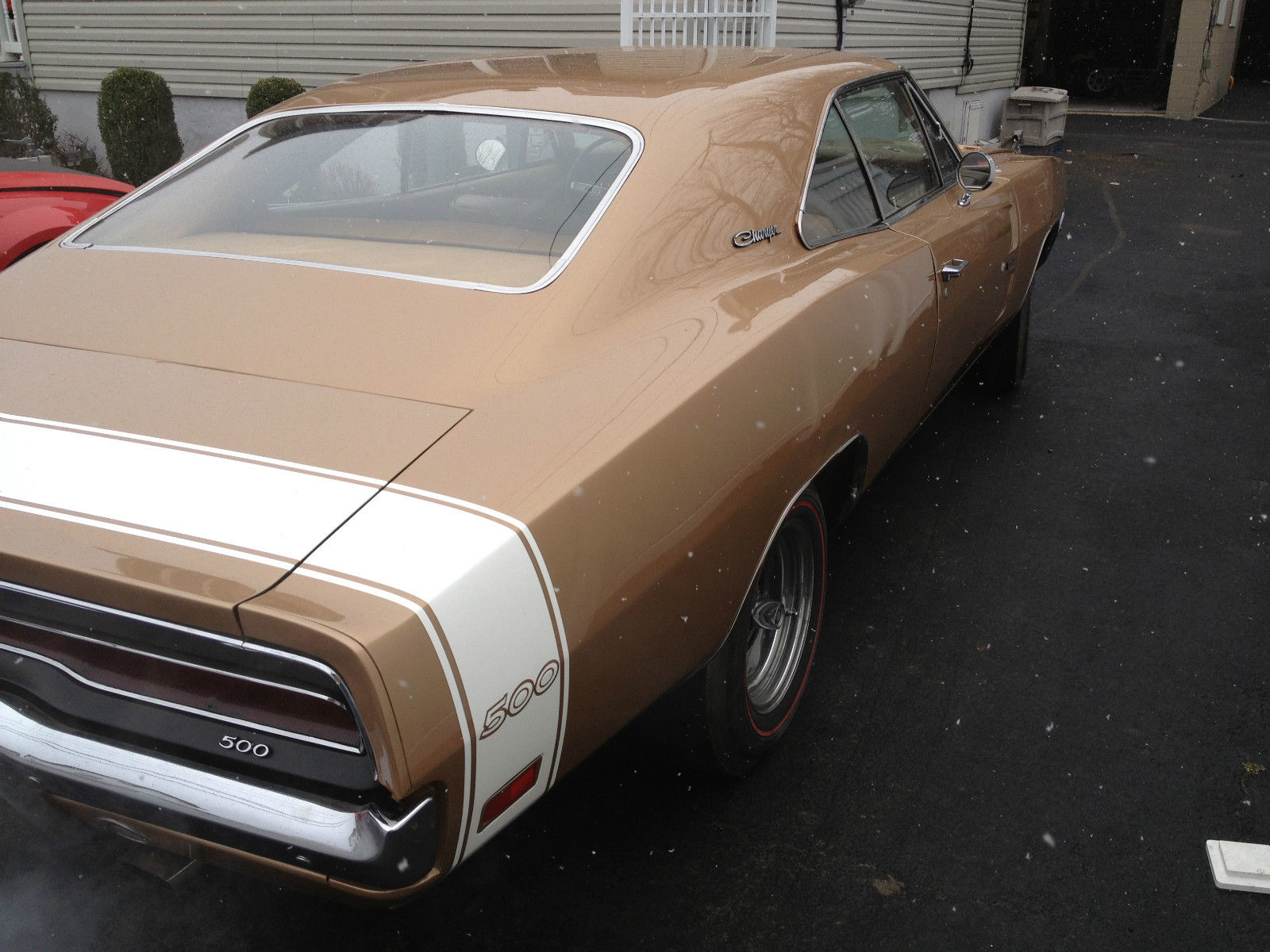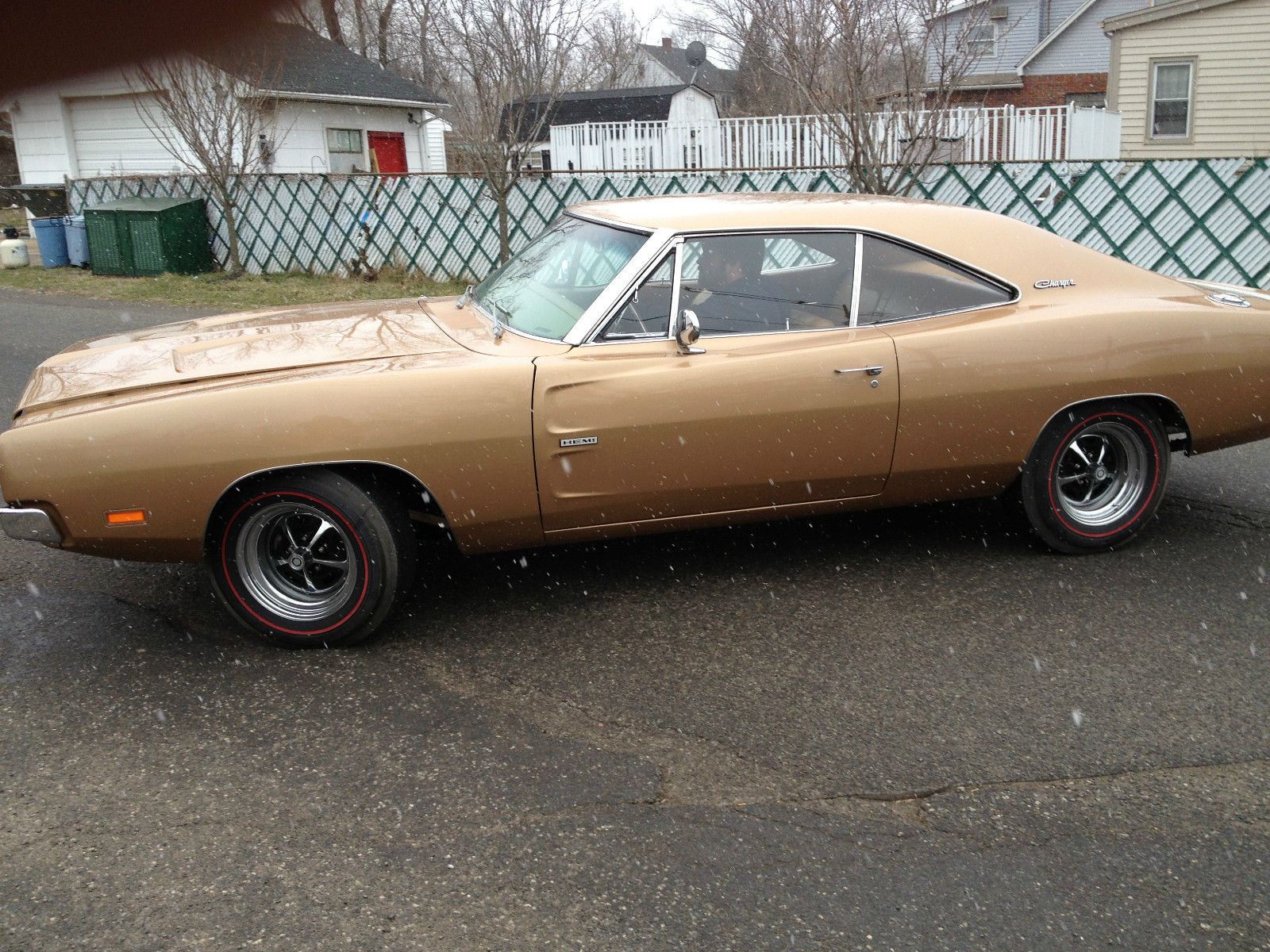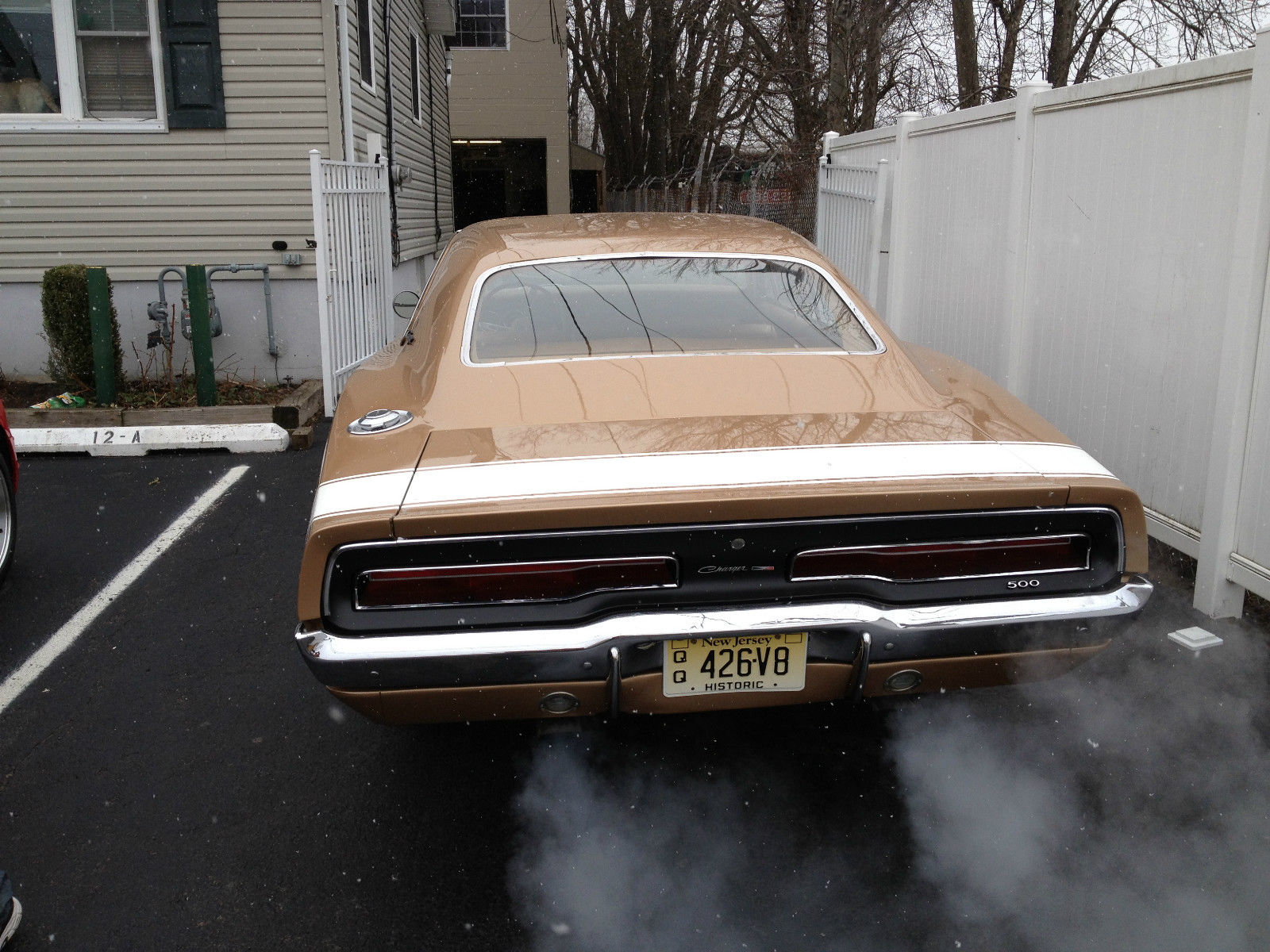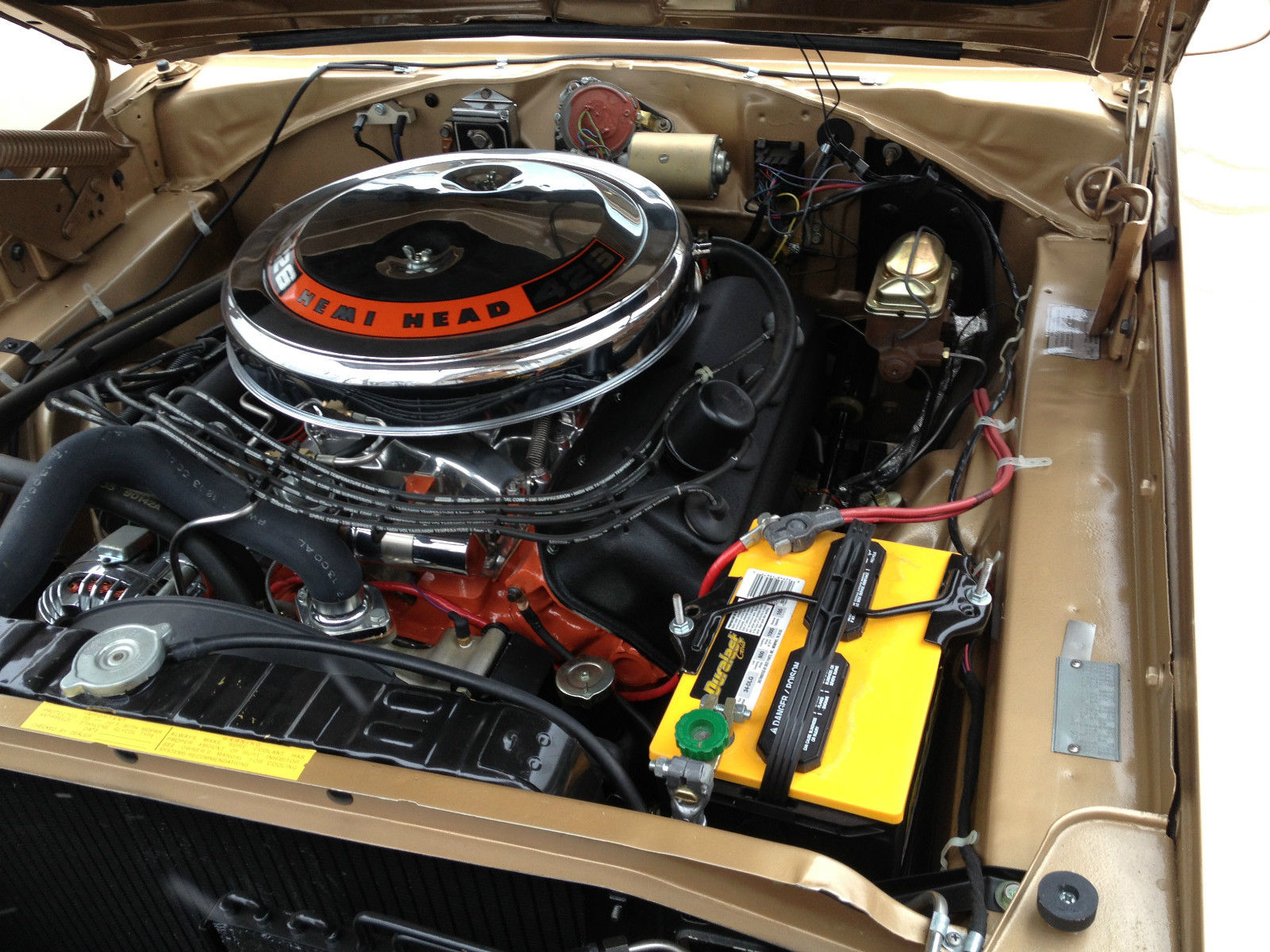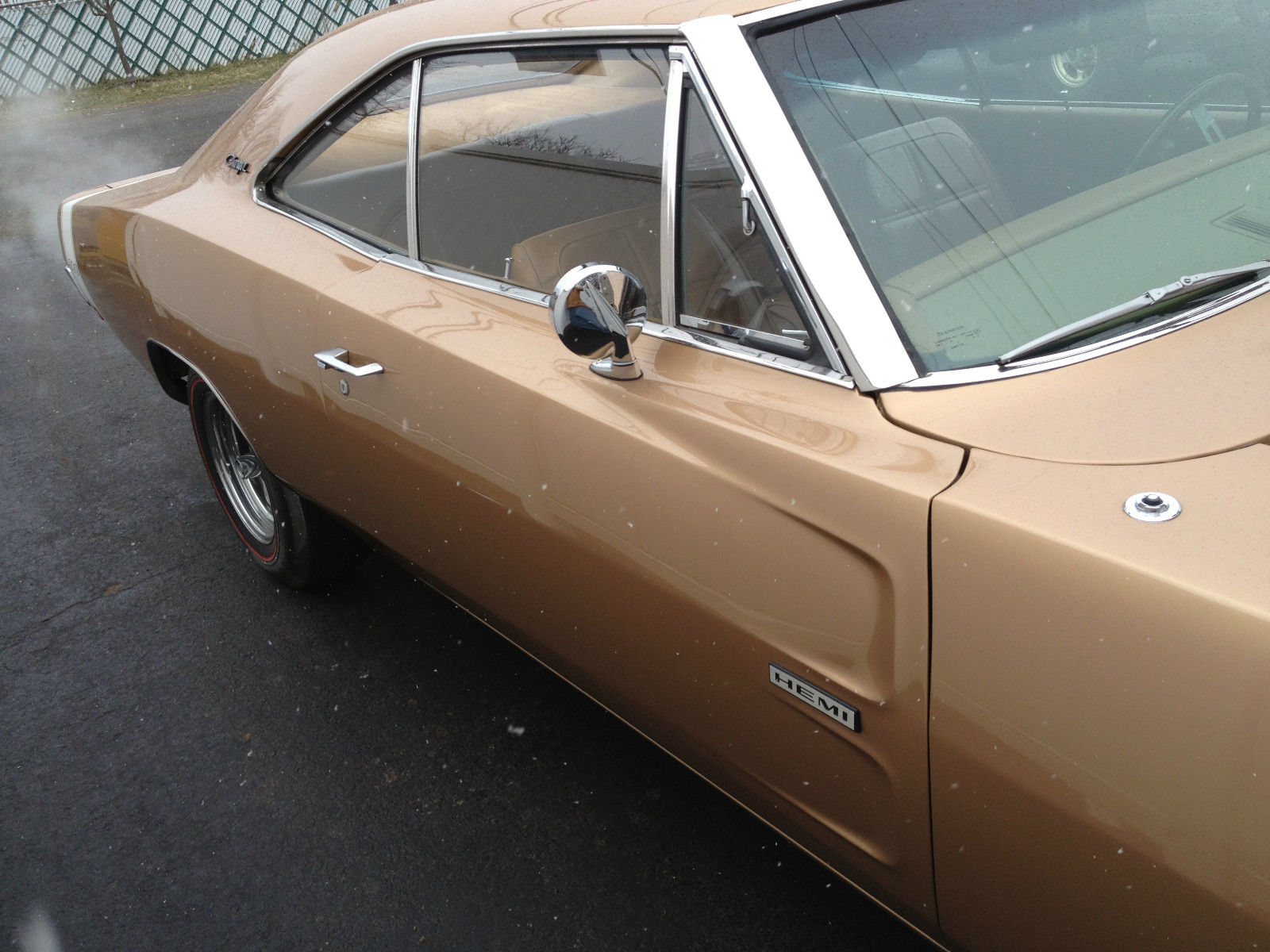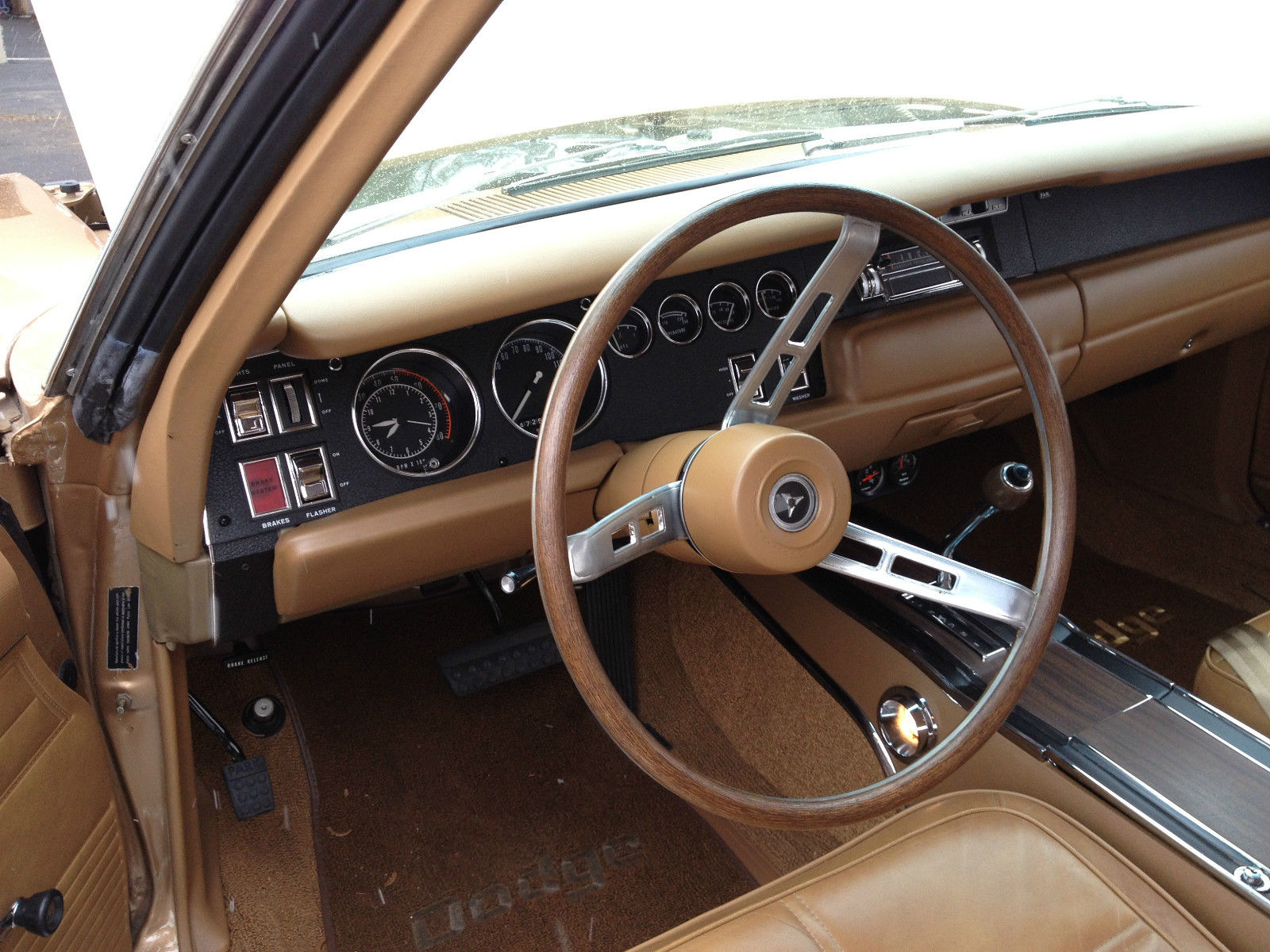This is an extremely rare and extremely cool Mopar. Only 392 built and few still with Hemis like this one. More pics plus eBay auction text after the jump!
Purchased this car years ago from California (had Black Plates) this was a calendar car and advertisements, this car has been completely restored, several years ago. All number matching 426 hemi, 2 Four Barrel Carbs,TTI Ceramic coated header exhaust system. Engine was rebuilt completely by Larry Shepard of Hemi’s Only, based in Akron, Ohio. In addition to his Hemi engine building expertise, Larry is an accomplished Top Fuel mechanic Original. 727 automatic Transmission was rebuilt by Mancini Racing, Rearend is 3:55 suregrip posi-traction. Complete interior done by Legendary Auto Interiors, Underneath is perfect and clean as the top of the car. On Passenger side quarter panel above the molding is a slight dimple on the body. I purchased the car with it, and it’s hard to tell if I didn’t tell you. I did not want it repaired and disturb the paint. Questions email ebay or gm1@usa.com Being sold locally so it could be cancelled at any time.
There are only a limited number of these Charger 500 and Daytona’s that were manufactured.
Information
1969 Dodge Charger 500 Hemi
Wheelbase 117.0 inch
Weight 3671 lb.
Price $4641
Engine ohv V-8 Displacement 426 cid
Fuel system 2 x 4 bbl.
Compression ratio 10.25:1
Horsepower @ rpm 425 @ 5000 Torque @ rpm 490 @ 4000
Representative performance 0-60 mph 5.7 sec. 1/4 mile 13.48 sec. @ 109.0 mph
Most folks who aren’t Mopar-owners who browse around Mopar car shows don’t realize there was a special NASCAR model of Charger built in 1969 that didn’t exactly stand out in a crowd. It’s not an in-your-face Charger like the Daytona, however it is the predecessor of the Daytona. More often than not, I’ve noticed that people walk right by a row of Chargers and don’t even notice the 1969 Charger 500 that sits among them. Yet it was instrumental to the winged cars being built. The 1969 Charger 500 was a mutation of the Charger. When Chrysler realized that the standard 1969 Charger was not doing well on the NASCAR Superspeedways like they had hoped, they took a second look at the body style. Chrysler aerodynamicists decided the standard Charger’s recessed grille with headlight covers grabbed a lot of air and slowed the car down. To improve the aerodynamics of the front end, they put a new grille in and moved it out flush with the front fenders. The headlights were left exposed. This marginally improved the Charger in the wind tunnel tests but Chrysler realized they could do better. They added flush covers on the A-pillars to further stream-line the front end. They also realized that the rear tunnel (flying buttress) window created a vacuum directly behind the roof area which caused a tremendous amount of drag. They tried to counteract the drag with a little ducktail on the truck lid. It wasn’t enough. So they went to extreme measures and redesigned the rear window area to be a flush fastback. They broke out the existing rear window (actually leaving some of the broken glass inside the rear package tray area), spot welded in a new window plug which extended the window out over the forward rear deck area, put in a long flat window glass, shortened up the trunk opening and the deck lid and then put the car in the wind tunnel. At first it looked like this was going to be the new great racecar from Chrysler. Unfortunately, NASCAR drivers that tested the 1969 Charger 500 on the Chrysler Proving Grounds test track soon found out the car was uncontrollable in the corners at speeds in excess of 120 mph. The front end still had too much drag and the rear end had too much lift due to the aerodynamic roof/rear window area. It was no more successful on the Superspeedway than it was on the test track. Only approximately 330 1969 Charger 500s were built. It was a very short-lived body style as it did not satisfy the needs of Chrysler to win races. However, it holds a very important place in Chrysler’s history in racing. It was the same aerodynamic rear window plug that ended up in the 1969 Daytona which replaced the 1969 Charger 500 after a few short months of production. And it was because of wind tunnel tests done on the Charger 500 that Chrysler found the magic answer to a very stable race car: a nosecone with a spoiler underneath and a big wing on the rear deck to create down-force and keep the rear end down. So the next time you walk past a row of Chargers and they all look the same, look again. From the side a 1969 Charger 500 looks just like a standard 1969 Charger. They were available with the same engine choices as the 1969 Charger R/T (440 4bbl or 426 Hemi) and were available in all of the 1969 R/T colors. Any combination of body color and stripe color was possible, since Chrysler did not specify to Creative Industries that a certain stripe had to go with any particular body color. In fact, there is an F8 green 1969 Charger 500 with a factory-installed red stripe! Below is a 1969 Charger 500 on the left, and a standard 1969 Charger on the right. One last interesting note: the 1969 Charger 500 is the ONLY Charger 500 that has the special rear window plug and flush front end. The 1970 Charger 500 was just a standard Charger body.

